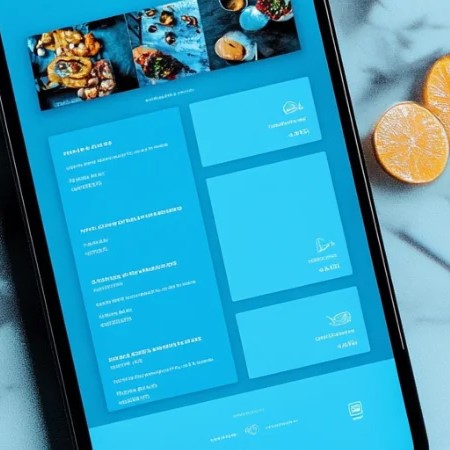The Importance of a Visually Attractive Menu in the Digital Age
In the digital age, your menu is more than a list of dishes—it's your restaurant's first impression, brand ambassador, and sales tool all rolled into one. With 70% of customers now viewing menus on mobile devices, visual design has become critical to success.
Visual appeal drives purchasing decisions
Studies show that customers form opinions about food quality within 90 seconds of seeing a menu. Visual elements influence this judgment as much as content itself.
An attractive menu suggests:
- Quality ingredients and careful preparation
- Professional kitchen and attention to detail
- Value for money and overall experience
- Modern, progressive restaurant management
Digital menus demand different design principles
What works on paper doesn't always translate to screens. Digital menus require specialized design considerations:
Mobile-first approach: With 70% of menu views happening on smartphones, your design must prioritize mobile experience while scaling beautifully to tablets and desktops.
High-quality food photography: Professional images can increase order rates by up to 30%. Poor photos, however, can decrease appeal even for excellent dishes.
Readable typography: Fonts must be large enough for mobile viewing while maintaining visual hierarchy and brand personality.
Intuitive navigation: Customers should find what they want within seconds, not minutes. Clear categories and search functionality are essential.
The psychology of menu design
Strategic visual elements guide customer behavior through proven psychological principles:
Color psychology: Colors trigger specific emotional responses that influence appetite and purchasing decisions. Warm colors stimulate appetite, while cool colors can suppress it.
Visual hierarchy: Use size, contrast, and positioning to guide eyes to high-margin items first.
White space utilization: Adequate spacing prevents cognitive overload and makes choices feel manageable.
Strategic item placement: Position profitable items where eyes naturally go first—typically the top and center of screens.
Common digital menu design mistakes
Avoid these pitfalls that drive customers away:
- Text too small for mobile viewing
- Low-quality or inconsistent photography
- Overwhelming color schemes
- Poor contrast that strains eyes
- Slow-loading images
- Inconsistent branding elements
- Cluttered layouts with no visual hierarchy
RECO's visual design advantages
RECO combines beautiful design with smart functionality:
Professional templates: Pre-designed layouts that match your brand identity while ensuring optimal usability.
Automatic image optimization: All photos are automatically optimized for different screen sizes and connection speeds.
Dynamic layouts: Content adapts intelligently to different devices and screen orientations.
Brand consistency: Maintain your visual identity across all customer touchpoints.
A/B testing capabilities: Test different visual approaches to optimize performance continuously.
Accessibility in visual design
Beautiful design must also be inclusive:
- High contrast ratios for visually impaired customers
- Alternative text for images
- Scalable fonts for different vision needs
- Simple navigation for all skill levels
The ROI of visual menu design
Investment in professional menu design pays dividends:
- Higher conversion rates from browsers to buyers
- Increased average order values
- Better customer satisfaction scores
- Enhanced brand perception and loyalty
- Reduced customer support needs
Measuring visual design success
Track these metrics to understand visual impact:
- Time spent viewing menu sections
- Click-through rates on featured items
- Order completion rates
- Customer feedback on ease of use
- Return customer engagement
Future-proofing your visual strategy
Stay ahead of design trends while maintaining usability:
- Regular design refreshes to stay current
- Responsive design for new device types
- Integration with emerging technologies
- Continuous user experience optimization
Your menu's visual appeal isn't vanity—it's strategy. In an increasingly competitive market, the restaurants that win are those that combine delicious food with outstanding presentation. Make your menu as beautiful as your food, and watch both customer satisfaction and revenue grow.
Visual excellence is no longer optional. It's the price of entry to modern restaurant success.
